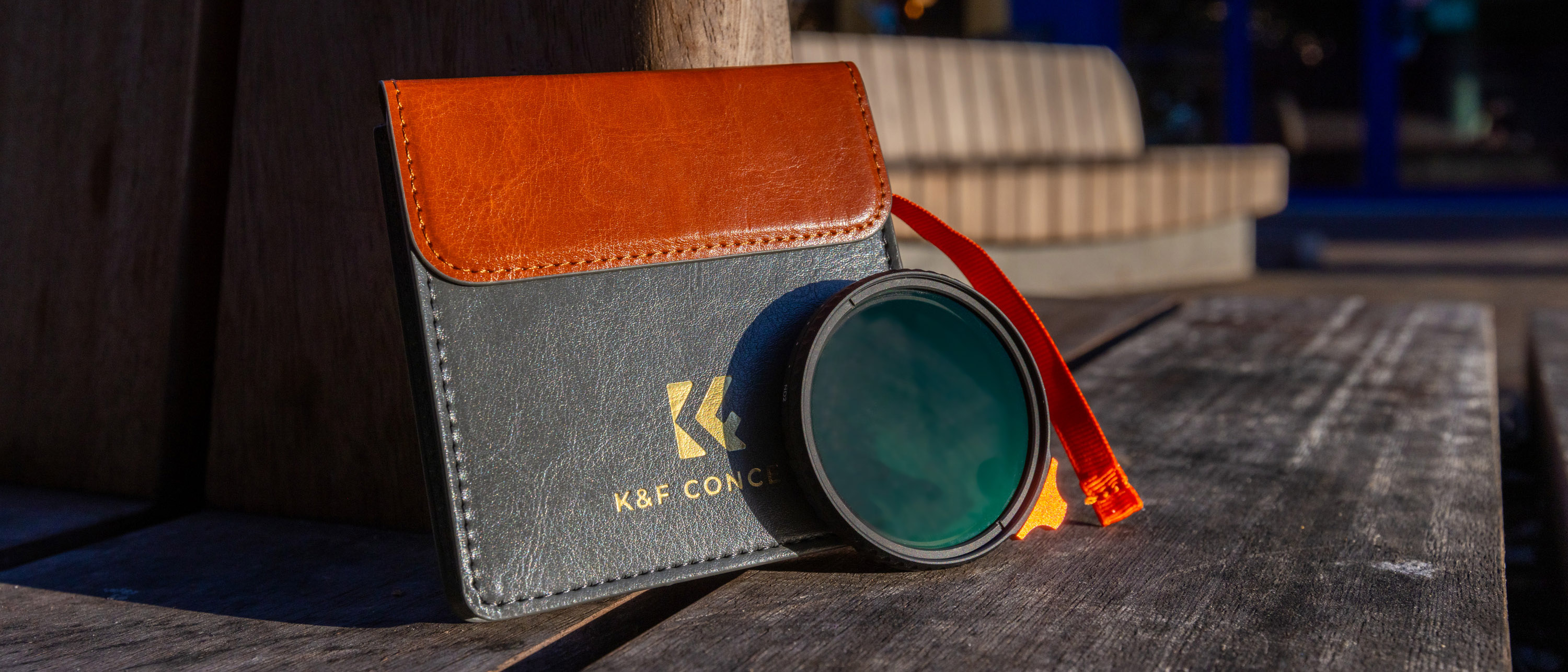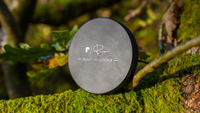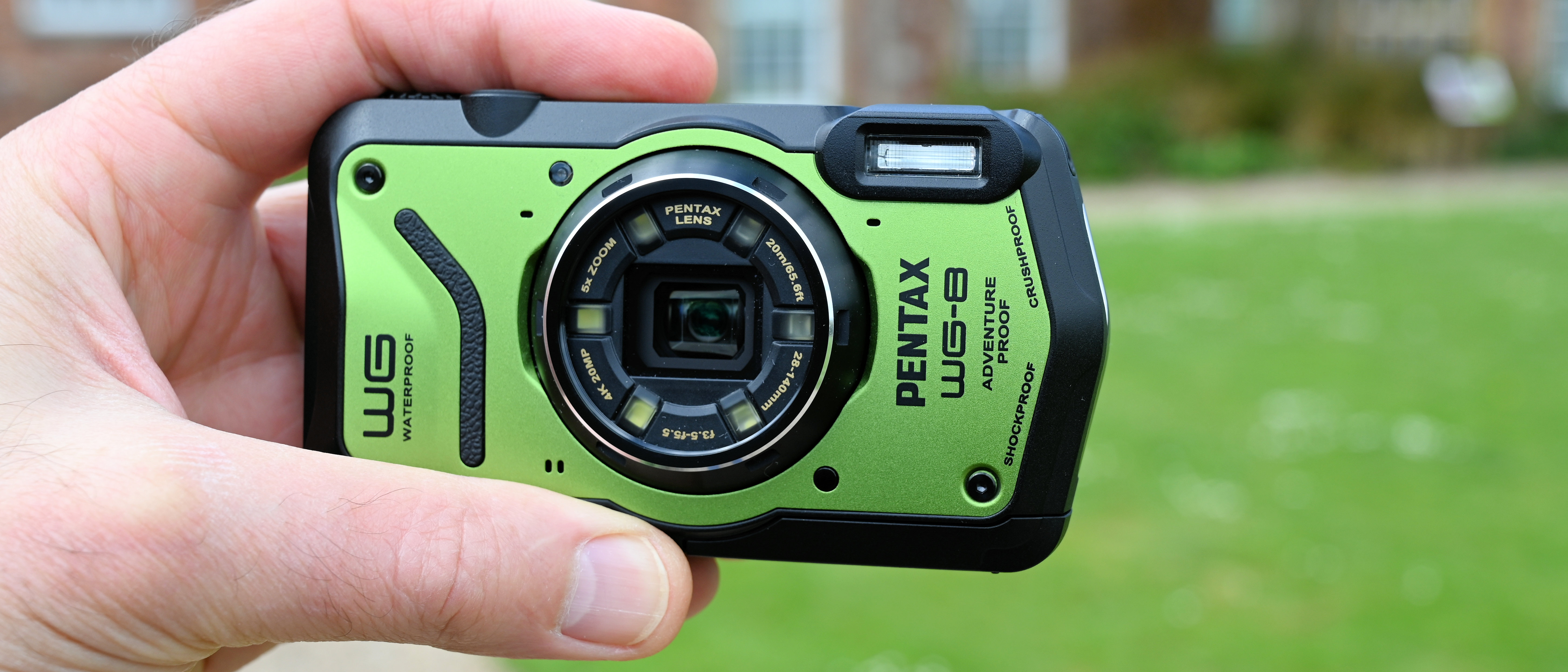Digital Camera World Verdict
The K&F Concept Nano-X Variable ND Filter ND2-400 is between 2-3x more expensive than its budget-friendly K&F Concept Variable Fader ND Filter 1-8.6 sibling and comes with many upgraded features to make it worth the extra investment. It's worth noting that image quality between the two filters is very similar, they both degrade sharpness, and color temperature and show an uneven cross polarization effect at the extremes. However, if this isn't a concern it's upgrades include a 28-layer nanocoating, putter style adjustment handle and nicer hard case which could make it worth the extra money. In terms of image quality, it simply can't compete with the likes of the Peter McKinnon VND Edition II which is substantially more at $249.
Pros
- +
Slim profile
- +
Dust and water-resistant nano-coating
- +
Range of filter thread options
- +
Putter-style control handle
- +
Decent hard case with drawstring for quick access
Cons
- -
Not magnetic
- -
More expensive
- -
Details are softened
- -
No haptic feedback or hard stops
- -
X-bar cross polarisation seen at extremes
Why you can trust Digital Camera World
A Neutral Density, or ND for short, is a filter that blocks light entering through the lens and has many uses, namely lengthening the shutter speed for stills photos, or controlling the light when recording video where you can’t control the shutter speed quite so easily.
These Neutral Density filters are so-called because they should have a ‘neutral’ effect on your images and not affect the colors or temperature of your photos. Variable ND filters, or VNDs for short, work in a slightly different way but allow the light to be reduced and the front part of the filter can be turned to allow or restrict light into the lens. VNDs however aren’t semi-transparent pieces of glass, they’re usually two polarizing filters sandwiched together which when turned against one another, they can restrict the flow of light to your desired amount.
K&F Concept’s Variable Fader ND 1-8.6 stops is one of the cheapest and in turn, one of the most popular VNDs on the market. But in this review, I’m taking a closer look at K&F's more premium Nano-X Variable ND 1-9 stops version to work out whether you should spend the extra. Here’s my findings…
K&F Concept Nano-X Variable ND Filter ND2-400: Specifications
| Filter type | Variable ND |
| Strength | 1-9 stops (ND2-400) |
| Mount | Screw-in |
| Thread diameter range (mm) | 49, 52, 55, 58, 62, 67, 72, 77, 82mm |
| Filter material | Optical Glass |
| Frame material | Aluminium |
| Thickness | 10mm (7mm when mounted) |
K&F Concept Nano-X Variable ND Filter ND2-400: Build & Handling
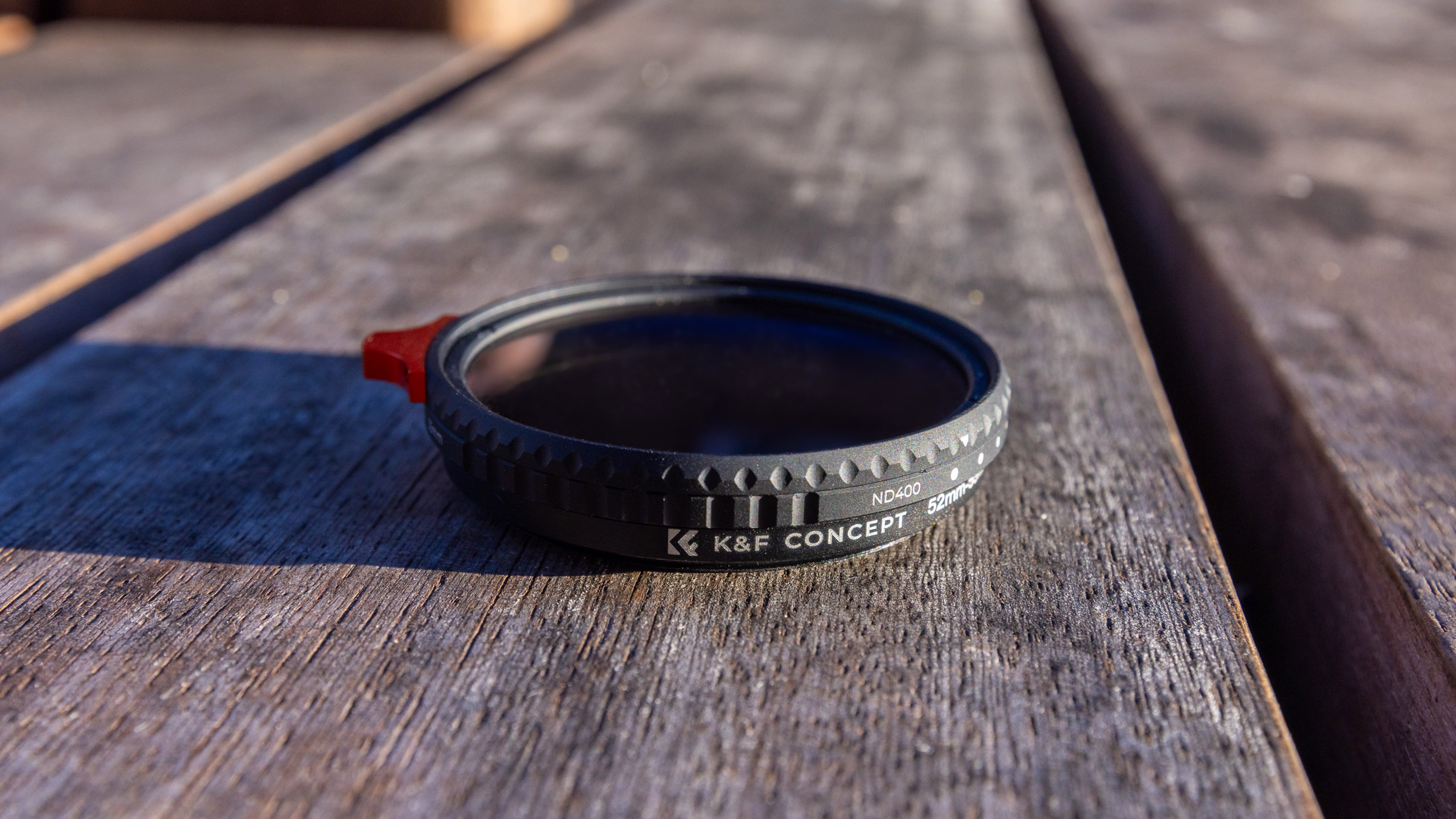
Unlike its more budget-friendly K&F VND fader sibling which is available to fit a whopping 13 front filter threads, the Nano-X is available in just nine. Though these nine options do cover the majority of common front filter thread options and the four options not available with this iteration are all 46mm or smaller, so won't affect larger lenses.
The 49mm option is 2.5x more expensive at $55, whilst the 82mm is three times more expensive at $99.99 so what do you get for your extra money?
Well, as it turns out you get quite a lot! For starters, the Nano-X gets its name from a 28-layer nanometer multi-coating. This not only makes it dust- and water-proof, but it also makes it scratch-resistant and anti-glare, with K&F Concept claiming an ultra-low reflectivity at just 0.2%.
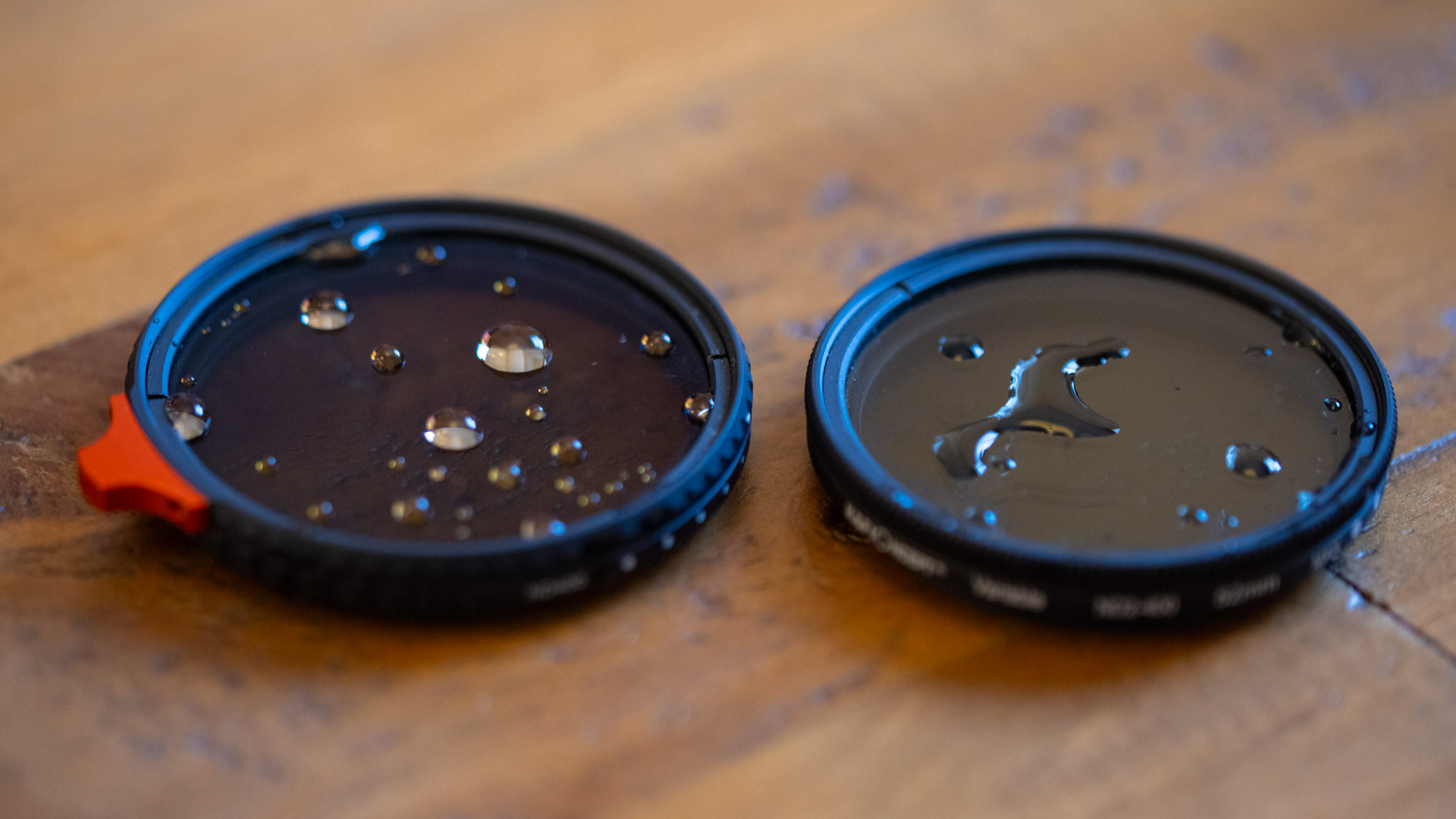
It also gets a putter-style control ring, an aluminum alloy adjustment handle which is a feature you sometimes don’t even see on very high-end VND filters. This handle makes it easier to dial in precise adjustments or control the filter strength smoothly when recording video. That said, it's bolted on with two screws so you can't remove it as quickly, as you can with some other designs that feature a screw-in adjustment handle. That said, the handle isn't coming loose in a hurry, so you never have to worry about misplacing it, or it accidentally falling off.
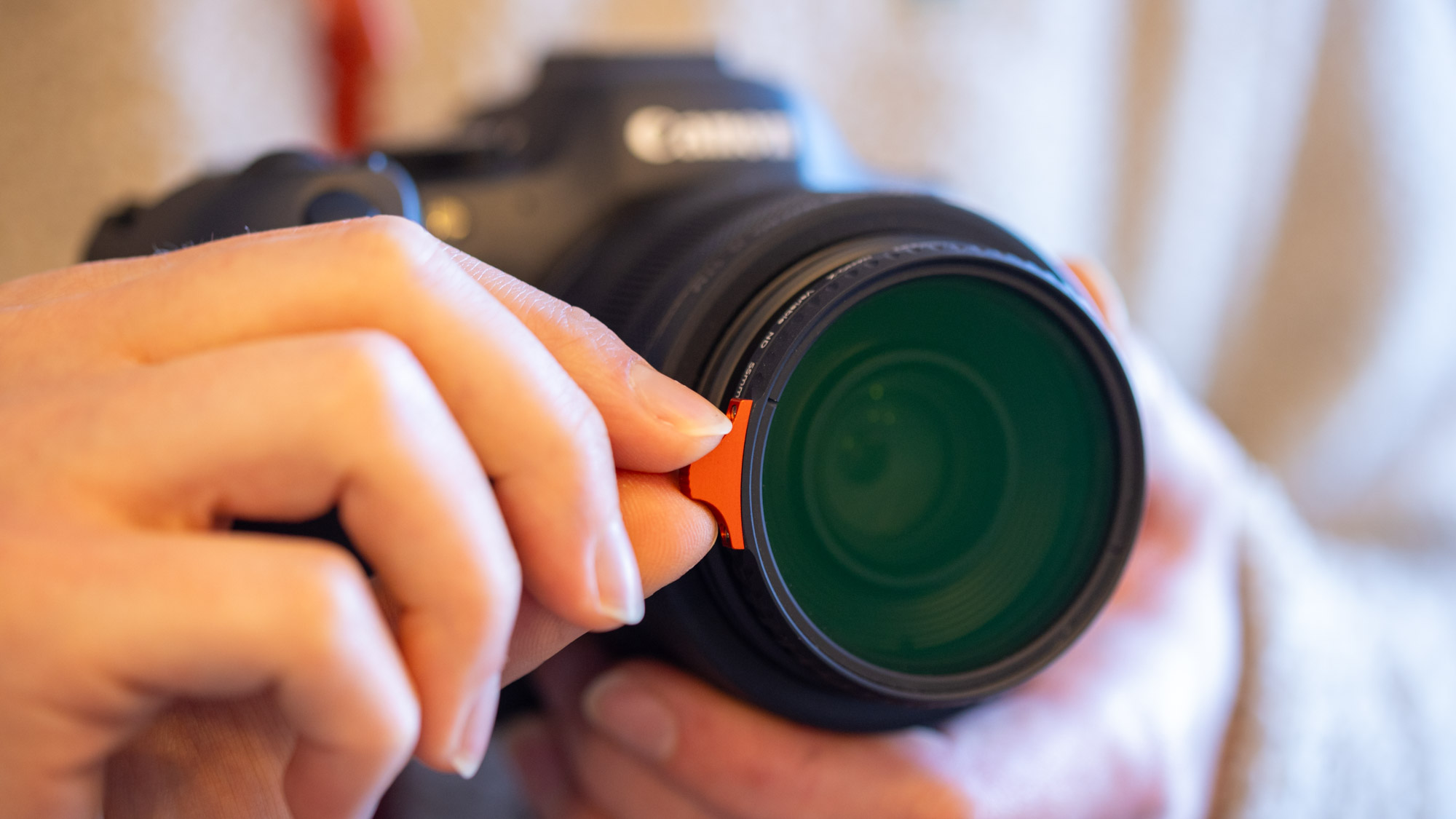
I was hoping the upgraded version would now feature hard stops at the extreme ends to prevent you from turning the filter too far past the min and max settings, but there's no such luck, the front control ring still moves freely and it's easy for user error to set it to an unintended value.
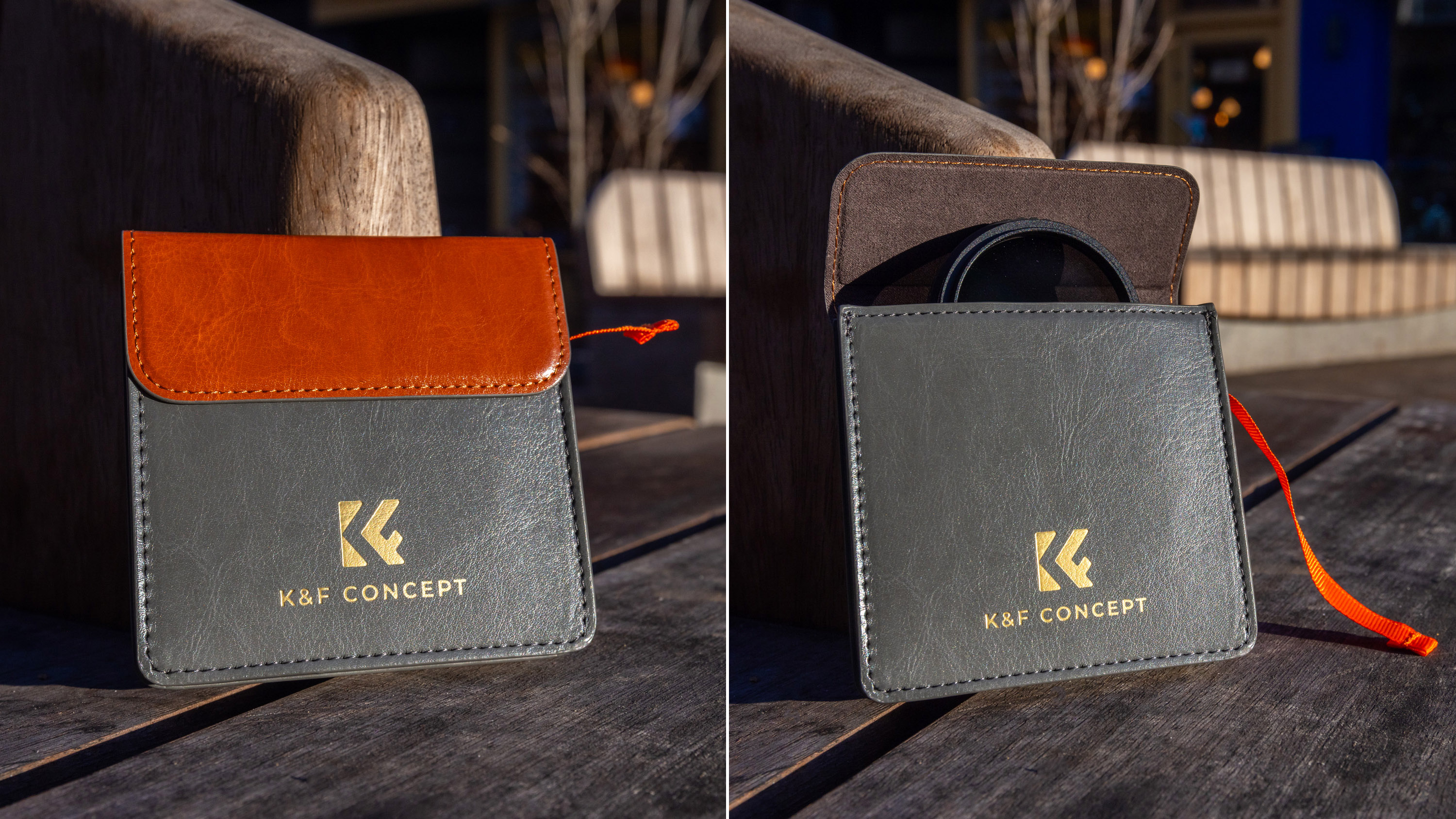
The cheap and cheerful plastic hard case that comes with K&F's basic entry-level VND gets a nice upgrade and is now a more premium-feeling leather effect pouch. This case also has a handy drawstring you can pull to raise the filter out of the case quickly. This is also packaged in a hard cardboard case with a magnetic closer, so you could also use this if you need even more protection when transporting your kit.
One thing to note is the Nano-X filter is a screw-in type and not magnetic as some other premium VND filters are.
K&F Concept Nano-X Variable ND Filter ND2-400: Performance
The Nano-X VND claims the same nine stops of light control from ND2 to ND400, though if we’re being picky the standard VND is only capable of 1-8.6 stops, whereas the more premium Nano-X model is a touch darker with a range of 1-9 stops.
I had no issues with these claims, the filter is capable of stopping down to these strengths. My only slight problem is that there's a really small window you need to set the adjustment ring to in order to achieve the maximum strength and it's just past the ND400 marking on the side of the filter, so these markings aren't totally accurate.
Depending on your lens and filter thread the VND filter may very well end up with the writing awkwardly placed on the underside of the lens, making it difficult to read. Hard stops at each end to give some feedback on the strength setting would have been very welcome but sadly missed on this edition.
K&F Concept claims that this version has a slim profile and shouldn’t produce vignetting even when shooting as wide as 16mm on a full-frame camera.
The multi-coating on the front of the filter was a welcome addition which made it more resistant to dust and dirt, while water beads off it nicely rather than sticking and pooling. It also makes it easier to clean and helps reduce glare and reflections when shooting towards the sun.
Overall, the Nano-X VND fader turns smoothly and the putter control is a welcome addition that makes it easier to turn and control the strength of the VND. Whilst this isn't easily removable like screw-in handles are on some of its competitors, it does mean that it's firmly fixed in place and won't accidentally come loose and become lost. The biggest omission of this filter is the lack of hard stops at the min and max settings which really would have improved haptics and performance.



K&F also claims, that unlike some of its competitors, the Nano-X VND delivers lossless image quality. Unfortunately, that's not the case and K&F can't change physics – putting any sort of glass in front of your lens is bound to have an effect on image quality. We found it warmed up the temperature of our images a little so it wasn't perfectly neutral and also saw some x-bar effect at the extreme settings, which led to patchy and uneven skies.

To test the sharpness of the filter I zoomed on the RAW files of my Canon EOS R5 which are 45MP. Going into 150% you can see a clear difference in sharpness with the filter softening fine details, though you do have to zoom in and go looking for it to notice this drop-off in clarity.
K&F Concept Nano-X Variable ND Filter ND2-400: Verdict
The K&F Concept Nano-X Variable ND Filter ND2-400 is between two and three times more expensive than its cheap and cheerful K&F Concept Variable Fader ND Filter 1-8.6 sibling, though at $55 for the 49mm option and $99.99 for the largest 82mm iteration, this filter range still won't break the bank.
It definitely has enough upgrades to make it worthy of the extra money in my opinion. You get a nice leather-effect case, putter-style adjustment ring for easy control, and water and dust-resistant coatings, plus it's a little stronger at the Max end with nine stops of light-blocking power, compared to the 8.6 stops on the more entry-level model.
The biggest omissions on this filter are the lack of hard stops at the Min and Max settings. If this is a non-negotiable, you may prefer Tiffen's MCS VND which has hard stops, a screw-in handle plus a nifty magnetic design. If you'd prefer to have hard stops plus a control ring that clicks into place at every stop value then consider the PolarPro Peter McKinnon VND Edition II, though it's worth noting both are more expensive than the K&F Concept Nano-X Variable ND Filter ND2-400 on trial here.
The only other consideration is that it's available in filter thread options ranging from 49mm through to 82mm, and if you need a filter smaller than 49mm the basic K&F Concept Variable Fader ND Filter 1-8.6 has more options to cater for you.
| Features | This filter is a step up from the most basic VND filters and comes with some additional niceties. Though it lacks hard stops at the min and max settings or magnetic caps. | ★★★★☆ |
| Design | The design is simple but effective, feels hardy and tactile and the leather effect storage case is a nice touch too, featuring a drawstring to help you get it out quickly. | ★★★★☆ |
| Performance | Still at the more affordable end of VND filters and as such its image quality isn't all that different - sharpness is still a little muddy, it warms up the color temperature and there is x-bar cross polarisation noticeable . | ★★★☆☆ |
| Value | Good value and although more expensive than the base model, it packs in enough upgrades to make it worthy of the extra cash. | ★★★★★ |
Should you buy the K&F Concept Nano-X Variable ND Filter ND2-400?
✅ Buy this if...
- You want a budget-friendly VND filter with a few extra bells and whistles
- You need to reduce light flowing into the camera and you're on a budget
🚫 Don't buy this if...
- You want hard stops at the extreme settings for haptic feedback
- You're looking for a VND with the best image quality
Alternatives
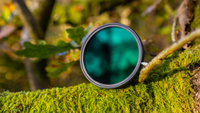
Tiffen’s newer 1.5-10 stops MCS VND filters is a little more expensive but has some desirable upgrades including a wider range of strength settings, magnetic design, compact magnetic filter caps and case as well as a smooth de-clicked strength ring with a detachable metal handle for easy adjustments when recording video.
Is this the ultimate VND filter? The PolarPro PMVND Edition II demands top dollar but has exceptional image quality and build. Its Defender360 system doubles up both as your filter caps and weather-sealed hard case when stowed away, and it has a clicked strength ring for haptic feedback.

Deputy Editor on PhotoPlus: The Canon Magazine, Dan also brings his technical wizardry and editing skills to Digital Camera World. He has been writing about all aspects of photography for over 10 years, having previously served as technical writer and technical editor for Practical Photography magazine, as well as Photoshop editor on Digital Photo.
Dan is an Adobe-certified Photoshop guru, making him officially a beast at post-processing – so he’s the perfect person to share tips and tricks both in-camera and in post. Able to shoot all genres, Dan provides news, techniques and tutorials on everything from portraits and landscapes to macro and wildlife, helping photographers get the most out of their cameras, lenses, filters, lighting, tripods, and, of course, editing software.
You must confirm your public display name before commenting
Please logout and then login again, you will then be prompted to enter your display name.
